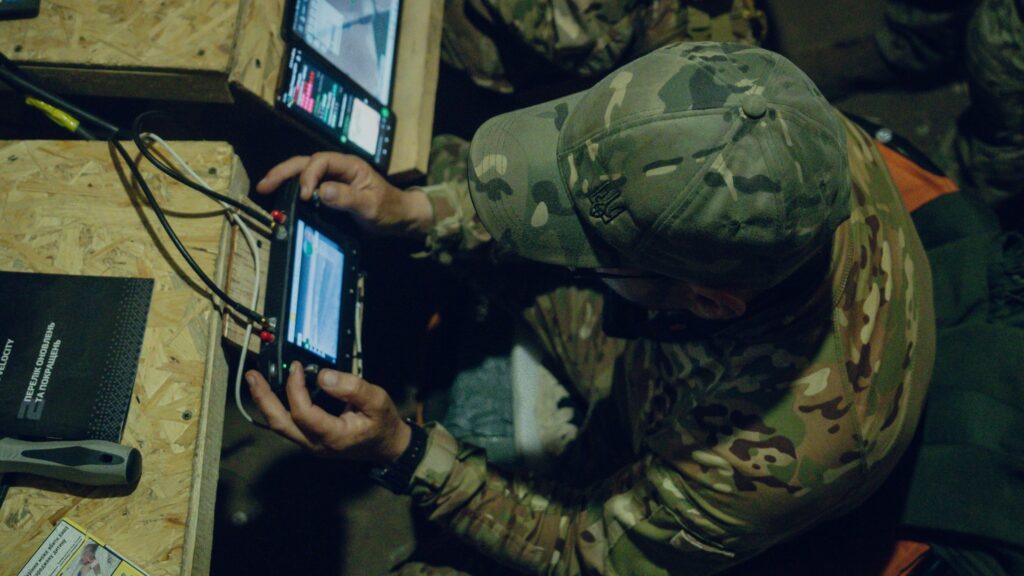Russia’s tanks hid behind smoke – Ukraine’s drones showed that trick is dead

Ukrainian drones, missiles and artillery devastated a Russian assault group outside of the town of Siversk in eastern Ukraine’s Donetsk Oblast on or just before Wednesday, blocking the Russians’ latest attempt to punch through Ukrainian defenses in order to drive at the so-called “fortress belt”—a chain of Ukrainian cities stretching through Kramatorsk and Sloviansk.
It was a rare armored assault in a war where armored vehicles are increasingly vulnerable to drones, mines, missiles and artillery. At least four Russian vehicles—a tank and three fighting vehicles—rolled toward Siversk in broad daylight. The tank fired shells. At least one vehicle popped smoke grenades, its crew clearly hoping to hide the assault group from Ukrainian drones.
It didn’t work. Drones from the Ukrainian 4th National Guard Brigade spotted the Russians mid-assault. Massive firepower rained down, including explosive first-person-view drones, drone-dropped grenades, an apparent Javelin anti-tank missile and cluster artillery. “In the first minutes of repelling the attack, one tank and three units of enemy armored vehicles were hit,” the Ukrainian brigade reported.
A dozen or more Russian infantry managed to dismount from the harried vehicles. First-person-view drones, bomber drones and artillery made quick work of them.
If the Russian assault was as poorly led as it appeared to be, it may have been doomed from the beginning. It’s typical, as Russia’s wider war on Ukraine grinds into its 40th month, for Russian regiments to send under-trained, unprotected troops on “reconnaissance-by-force” missions in the early hours of a planned attack—often in civilian cars and trucks or on motorcycles, all-terrain vehicles or even electric scooters.
Russian assault column destroyed by the 4th Brigade of the National Guard of Ukraine. https://t.co/NKC2EdJeHh pic.twitter.com/vCAQqkTp8a
— Special Kherson Cat(@bayraktar_1love) June 11, 2025
Costly strategy
Believe it or not, there’s a deliberate strategy at play. Yes, it’s costly. No, it doesn’t always fail.
Unencumbered by heavy armor, lightly-equipped Russian recon troops can move fast—and that gives them a chance, if not a great one, to get across the drone-patrolled, mine-seeded, artillery-pocked no-man’s-land before Ukrainian brigades can deploy their heaviest firepower.
These troops “are ordered to advance towards where they assess Ukrainian positions to be, conducting reconnaissance by drawing fire,” Nick Reynolds and Jack Watling explained in a study for the Royal United Services Institute in London.
“If the group encounters resistance, Russian commanders assess where they believe the best lines of approach are, and in particular, where the boundaries between defensive units lie,” Reynolds and Watling added in their February study.
“If Ukrainian positions are positively identified, sections are persistently sent forward to attack positions, which are further mapped and then targeted with artillery, FPVs and UMPK glide bombs,” Reynolds and Watling wrote. “When rotation or disruption of the defence is achieved, Russian units aim to conduct more deliberate assault actions.”
What’s most important is that the “deliberate assault actions,” involving heavy vehicles, only takes place after the lighter recon forces have identified a safe route across the no-man’s-land—and Russian artillery, drones and bombs have suppressed the nearby Ukrainian forces.
Russian commanders don’t appear to have followed the usual plan outside Siversk on Wednesday. And potentially scores of Russians paid with their lives.
But don’t expect the Russians to give up. The Ukrainian Center for Defense Strategies anticipated further Russian action in the area. “The 3rd Combined Arms Army will try to break through to the northern bank of the Siverskyi Donets River between Yampil and Hryhorivka, and from the southeast—toward Siversk,” CDS predicted.
If the Wednesday assault didn’t end with the millionth Russian casualty, the next assault just might.

